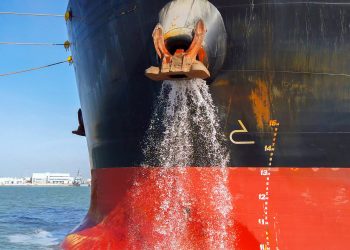All DNV GL-classed vessels are now able to utilize the possibility of remote surveys for some inspections through the Veracity data platform, which means that a DNV GL surveyor will not be required to travel to the vessel.
Instead, by using an online connection or video streaming link, a dedicated team of remote surveyors can provide support to vessels anywhere in the world with documentation, images, video (streaming or recordings), and input provided by the customer and crew.
This is another big step forward in using the power of digitalization and increased connectivity to deliver smarter and more efficient services. Remote surveys allow us to free up time for our customers, while delivering our services with unparalleled response time. In addition, cutting down on unnecessary travel can result in lower costs, less waiting, and more operational up-time,
…said Knut Ørbeck-Nilssen, CEO of DNV GL – Maritime.
More than 1,000 remote surveys were completed in the pilot and scaling up phase by the Direct Access to Technical Experts (DATE) units based in the Maritime Operational Centre in Høvik, alongside units in Hamburg, Singapore, Houston and Piraeus. Technology testing began in 2017, with the first production pilots in June 2018, and now the entire DNV GL fleet is able to take advantage of the service.
When a customer makes a survey request through DNV GL’s fleet portal on the Veracity platform, they may, for some survey types, be given the option by the system to choose to carry out the survey remotely.
All such survey requests are then evaluated by a remote surveyor to make sure that the survey can be offered remotely. The remote survey regime has been constructed to ensure that the level of assurance is equivalent to an onboard survey.
The types of surveys able to be offered as remote surveys include: occasional surveys that fall between periodical surveys, documentation-based surveys, testing and witnessing systems during normal operation, and surveys not ordered together with annual surveys. Periodical surveys like the annual survey of a vessel are not part of the remote survey programme as they require a surveyor onboard.
































































Query -How video streaming transmission is achieved in hazardous areas of the tankers. E.g open Deck areas where flammable mixtures are present and only intrinsically safe cameras are allowed,but no transmission is permitted, except low powered UHF walkie talkie transmission.
Also the device will be in the hands of the ship staff,who can manipulate to not show what they should not to avoid observations in the survey.